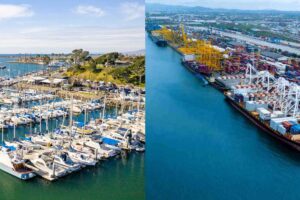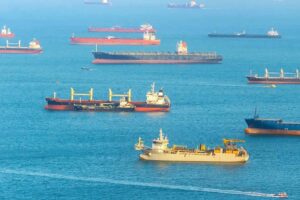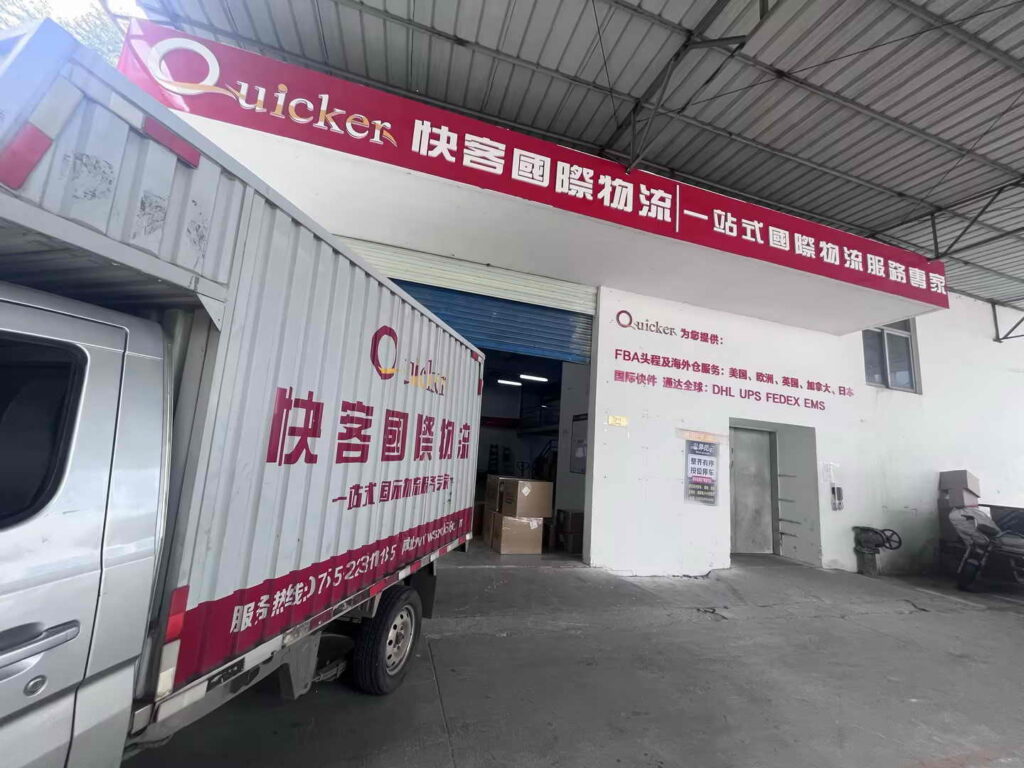20 milioni di TEU: Il porto di Nansha fa la storia
Il 20 dicembre, il flusso annuale di container dell'area portuale di Nansha del porto di Guangzhou ha superato i 20 milioni di TEU (unità equivalenti a venti piedi), segnando un traguardo storico. Questo risultato colloca il porto di Nansha tra i primi tre porti in Cina con un flusso annuale superiore a 20 milioni di TEU in un'unica area portuale. Dal suo avvio, 20 anni fa, il porto di Nansha ha movimentato complessivamente oltre 230 milioni di TEU.
La portata di un porto si misura dalla sua capacità di movimentazione, mentre la sua forza si riflette nella sua capacità di trasporto dei container. Il raggiungimento di 20 milioni di TEU significa che il porto di Guangzhou, con il porto di Nansha come nucleo centrale, sta avanzando coraggiosamente verso la trasformazione in un hub di trasporto internazionale. Questo traguardo rafforza la connettività all'interno della Greater Bay Area (GBA) di Guangdong-Hong Kong-Macao e segna un passo avanti fondamentale.

A più grande Il porto di Guangzhou sta sorgendo per sostenere l'economia marina della città e trasformare Guangzhou in una metropoli moderna con un carattere marittimo distinto.
A livello superiore Il porto di Guangzhou sta cogliendo le opportunità per servire l'apertura della Cina a un livello superiore.
A più forte Il porto di Guangzhou sta assumendo la missione di integrare la GBA, di servire le strategie nazionali e di guidare lo sviluppo economico e sociale regionale.
Sfruttare l'oceano: Scrivere un nuovo capitolo per i porti in acque profonde
Per secoli, gli abitanti di Guangzhou si sono riferiti al Fiume delle Perle come al "mare". Non si tratta di un errore, ma riflette il sogno di lunga data della città di prosperare in riva al mare. Il Fiume delle Perle, il più grande sistema idrico della Cina meridionale, nasce dalla confluenza di tre fiumi e scorre attraverso sei province (Yunnan, Guizhou, Guangxi, Guangdong, Jiangxi e Hunan) e la regione di Hong Kong-Macao prima di raggiungere il Mar Cinese Meridionale attraverso otto estuari, tra cui Humen, Jiaomen e Hongqimen. Le abbondanti risorse idriche, la fitta rete fluviale e il vasto entroterra hanno conferito a Guangzhou vantaggi naturali nel settore della navigazione.
Oltre 2.000 anni fa, il porto di Guangzhou iniziò il suo viaggio verso il mondo, salpando dal Mud City Wharf della città, trasportando tè e altre merci con i venti caldi del Pacifico. Animali esotici come rinoceronti ed elefanti, insieme a tesori rari, arrivavano qui, segnando l'inizio dell'antica Via della Seta marittima. Per più di due millenni, il porto di Guangzhou ha facilitato il flusso continuo di merci e scambi commerciali.
Negli anni '80, con il boom del commercio estero nel Delta del Fiume delle Perle, le vie d'acqua del porto di Huangpu non erano più in grado di accogliere le navi portacontainer ultra-grandi, ostacolando la crescita commerciale di Guangzhou. La soluzione? Guangzhou decise di trasformare l'isola di Longxue in un porto in acque profonde per superare il collo di bottiglia.
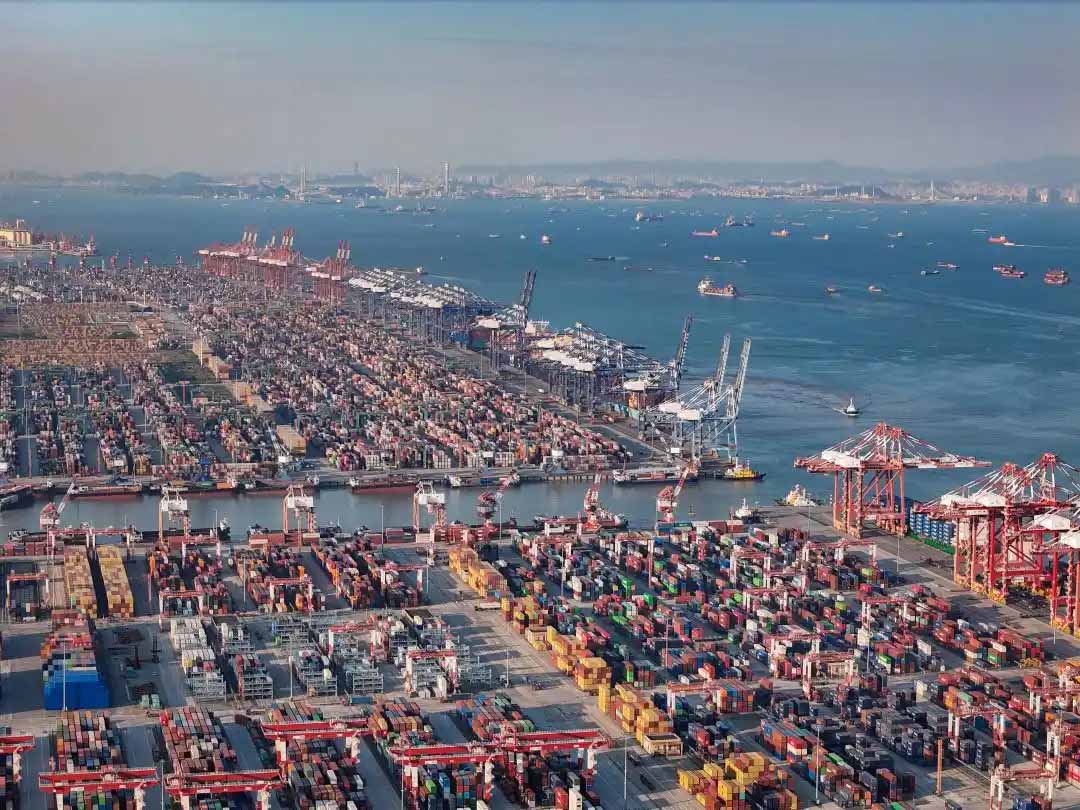
Nel 2004 è arrivata la svolta. Il 28 settembre è entrata ufficialmente in funzione la prima fase del porto di Nansha, che comprende quattro ormeggi multiuso da 50.000 tonnellate. Ciò ha segnato la trasformazione del porto di Guangzhou da porto fluviale a vero e proprio porto marittimo in acque profonde.
Situato al centro geometrico della GBA e adiacente ad altri porti importanti come Shenzhen e Hong Kong, il porto di Nansha ha optato per uno sviluppo differenziato. Si è concentrato sul Sud-Est asiatico e sull'Africa, potenziando le capacità di servizio del cluster portuale di livello mondiale della GBA. Due decenni dopo, il porto di Nansha è diventato il più grande porto hub globale della Cina meridionale, il più grande hub per il commercio interno di container, il più grande hub per il trasbordo di cereali, un hub automobilistico chiave e un importante gateway per le rotte marittime africane e del Sud-Est asiatico.
Recentemente il Consiglio di Stato ha approvato il Piano regolatore territoriale di Guangzhou (2021-2035)posizionando Guangzhou come "città moderna con caratteristiche marittime distintive". Il porto di Nansha è diventato un pilastro strategico a sostegno della visione di Guangzhou di diventare una "città di classe mondiale con fascino classico e vitalità moderna". Grazie al porto di Nansha, Guangzhou si è trasformata in una vera "città marittima", realizzando il sogno millenario di abbracciare l'oceano. Inoltre, il porto di Nansha sta accelerando la formazione di un cluster portuale di livello mondiale incentrato sulla GBA.
Integrare porti e città: Una questione centrale rivisitata
I porti influenzano le città ridisegnando l'allocazione delle risorse. Un porto crea percorsi di accesso ai mercati globali per le imprese, attrae industrie, stimola il commercio e ottimizza le strutture industriali. La storia dello "sviluppo urbano guidato dai porti" inizia qui.
Sulla scala geografica del GBA, il porto di Nansha ha avvicinato Nansha alle aree urbane centrali di Guangzhou, Shenzhen e persino Hong Kong. A lungo termine, questo porterà a un'ulteriore urbanizzazione di Nansha e contemporaneamente alla crescita del porto, creando una relazione dinamica tra i due. In occasione del "Guangzhou Nansha Spatial Plan International Consultation Expert Exchange", Wang Jixian, direttore di ricerca del Belt and Road Hong Kong Center, ha sottolineato l'interazione tra il porto di Nansha e la città.
I porti sono centri naturali che favoriscono lo sviluppo urbano e la crescita economica. Oggi i porti non si limitano più alla movimentazione delle merci, ma si sono estesi a funzioni industriali, commerciali, finanziarie e di sviluppo urbano. Negli ultimi 20 anni, il porto di Nansha è diventato una porta d'accesso fondamentale per il commercio estero nella regione del delta del fiume Pan-Pearl, attirando flussi di persone, merci, capitali e informazioni. Ha inoltre attirato risorse nazionali e internazionali, tra cui capitali, talenti, beni, tecnologie e dati.
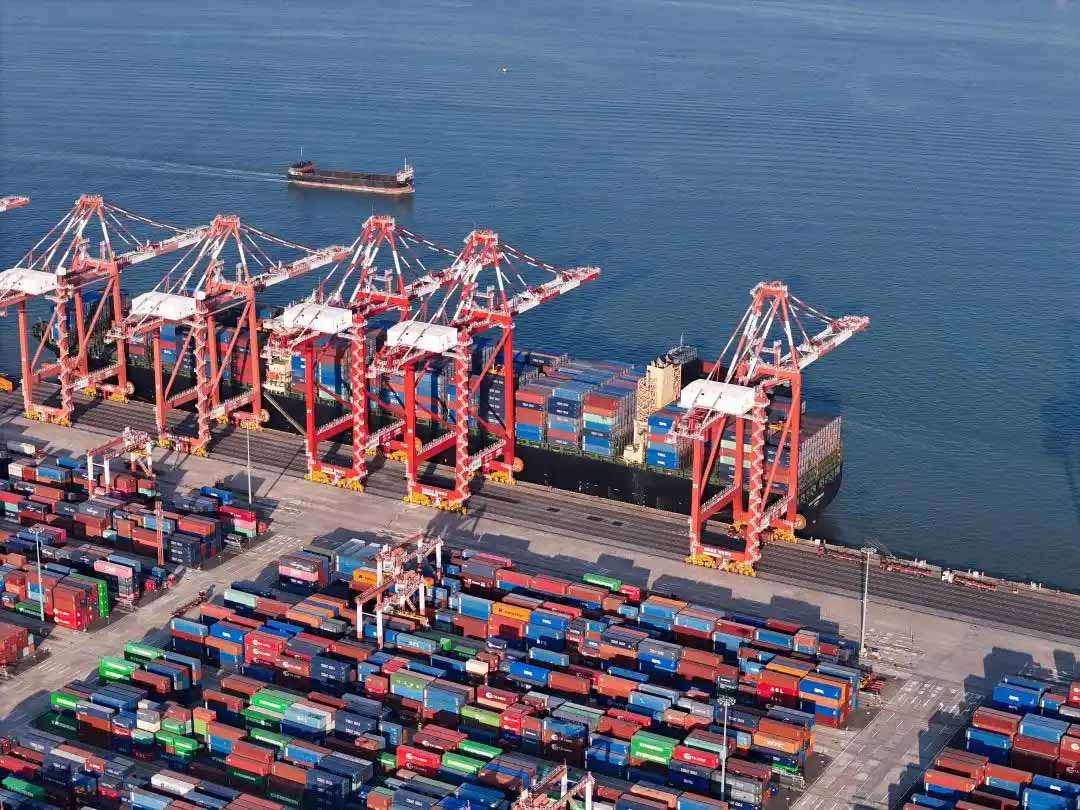
Il Piano Nansha ha affidato a Guangzhou la missione di "potenziare il suo ruolo di hub logistico e marittimo internazionale". Con il porto di Nansha come fulcro, Guangzhou Port sta guidando lo sviluppo dei cluster industriali, l'innovazione tecnologica e la collaborazione regionale, liberando il pieno potenziale di Nansha.
L'integrazione porto-città di Nansha è anche incorporata nella pianificazione urbana di Guangzhou. Per anni Guangzhou ha perseguito una strategia di "espansione verso sud", utilizzando il porto di Nansha come perno per estendere le funzioni della città verso l'oceano. Il Piano regolatore territoriale di Guangzhou (2021-2035) prevede un quadro spaziale marittimo di "una cintura, tre zone e un filo di perle", che collega i cluster industriali costieri ed estende le catene industriali tradizionali verso il mare.
In agosto, il Piano d'azione triennale per trasformare Guangzhou in un hub marittimo internazionale (2024-2026) è stato rilasciato, proponendo la costruzione di una zona economica portuale di Guangzhou. Questa iniziativa mira ad accelerare lo sviluppo di un moderno sistema industriale portuale, a rafforzare i collegamenti tra la zona portuale e le aree funzionali principali e a convertire il traffico portuale in crescita economica.
Ancorare l'oceano: costruire corridoi commerciali globali
L'oceano è una fonte di ricchezza che scorre. In un mondo in cui il 90% del commercio internazionale si basa sul trasporto marittimo, investire nell'economia marina è diventato un'esigenza delle città globali.
All'inizio di dicembre, il porto di Nansha ha accolto la prima spedizione "cherry express" dell'anno dopo un viaggio di 22 giorni e 20.000 chilometri. Oggi il porto di Nansha è uno dei maggiori porti cinesi per le importazioni di ciliegie. Sfruttando le opportunità commerciali Cina-America Latina e concentrandosi sui mercati sudamericani, il porto di Nansha è diventato una porta d'accesso fondamentale nel nuovo corridoio commerciale Asia-America Latina.
Inoltre, il porto di Nansha ha lanciato servizi internazionali di trasporto merci su rotaia verso l'Asia centrale, collegando senza soluzione di continuità la "Via della Seta marittima" con la "Cintura economica della Via della Seta". In quanto fulcro del porto di Guangzhou, Nansha sta migliorando la resilienza del commercio estero ottimizzando le rotte di navigazione, migliorando i servizi portuali e promuovendo la facilitazione del commercio transfrontaliero, rafforzando la sua competitività globale.
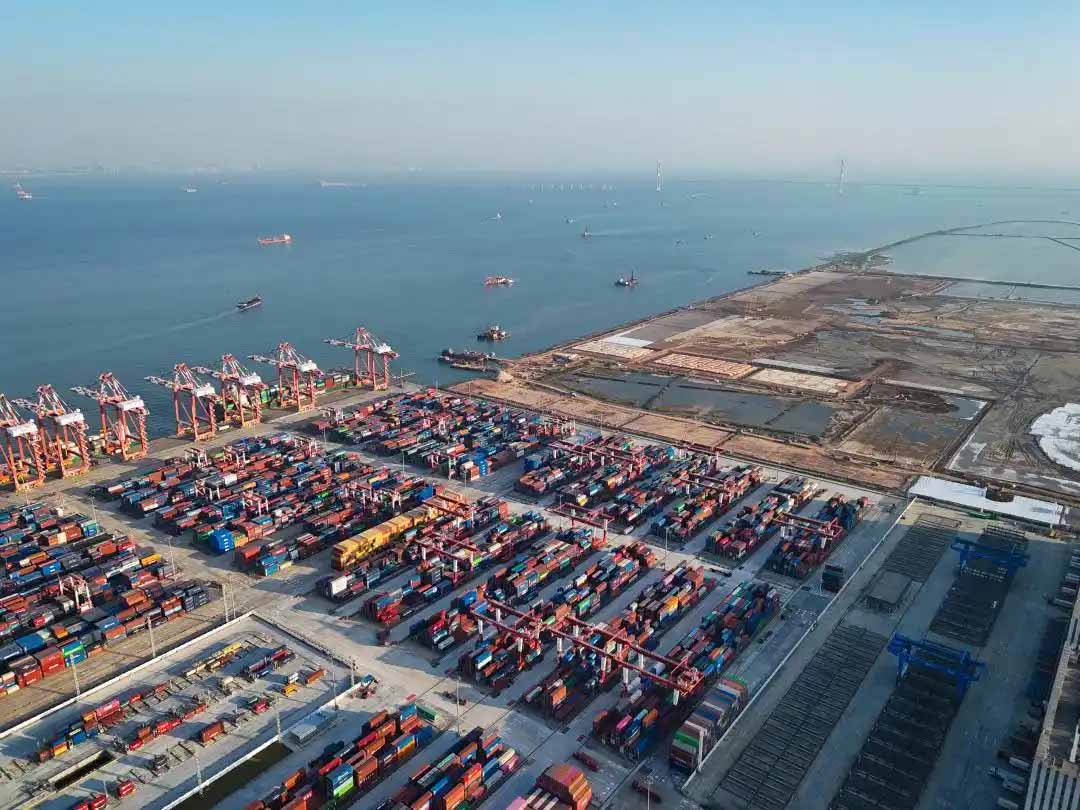
"Sempre più aziende cinesi scelgono i Paesi ASEAN come prima tappa per la loro espansione all'estero. Le rotte commerciali e le capacità logistiche del porto di Nansha sono perfettamente in linea con questi piani", ha dichiarato Xie Xiaohui, vicepresidente della Conferenza politica consultiva del distretto di Nansha. Grazie alla sua posizione strategica e alle sue solide capacità logistiche, il porto di Nansha sta guidando il commercio estero, lo sviluppo industriale e l'espansione globale delle imprese di Guangzhou e della GBA.
Ad esempio, la Guangdong Homa Refrigerator Co. il più grande esportatore di frigoriferi al mondo, ha iniziato a collaborare con il porto di Nansha nel 2004, esportando 2.000 TEU quell'anno. Entro il 2024, questa cifra è cresciuta di 110 volte, raggiungendo i 220.000 TEU. "Per le grandi imprese manifatturiere, il porto è un'ancora di salvezza essenziale per l'espansione globale", ha dichiarato il presidente di Homa Yao Youjun. "Le capacità del porto di Nansha in acque profonde, il breve raggio di trasporto e i costi contenuti hanno contribuito a ridurre le spese logistiche e a sostenere la portata globale dei prodotti cinesi. Prevediamo che le nostre esportazioni attraverso il porto di Nansha cresceranno di 10-20% all'anno".
Recentemente è iniziata la costruzione della prima fase del centro di transito per l'e-commerce del Guangzhou East Multimodal Transport Hub. Una volta completato, questo sarà il più grande centro di consegna di e-commerce al mondo, consolidando ulteriormente la posizione del GBA come hub logistico globale.
Conclusione
Con il traguardo di 20 milioni di TEU come nuovo punto di partenza, il porto di Nansha sta spingendo Guangzhou a diventare un hub logistico globale. La perfetta integrazione delle reti marittime, terrestri, aeree e ferroviarie del porto ha creato un sistema commerciale e logistico completo incentrato su Nansha, che si irradia in tutta la regione del delta del fiume Pan-Pearl.
Mentre Guangzhou sfrutta il porto di Nansha per espandere i suoi corridoi commerciali globali, la visione della città di diventare una città hub di livello mondiale sta prendendo costantemente forma. Le maree dell'oceano non si fermano mai, e nemmeno la storia dell'impatto trasformativo del porto di Nansha su Guangzhou.


